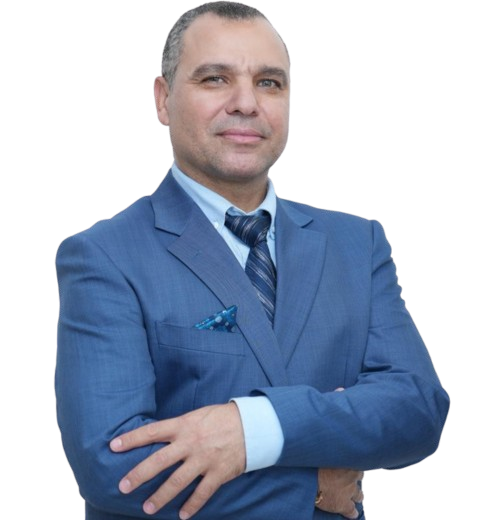Epilepsy is a neurological disorder that causes sudden, recurrent seizures due to abnormal electrical activity in the brain. These seizures can range from mild sensory disturbances to severe convulsions or loss of consciousness.
While epilepsy can be challenging, the right epilepsy treatment can help most people manage their symptoms effectively and lead full, active lives.
Overview of Epilepsy
Epilepsy is one of the most common neurological conditions worldwide, affecting millions of people across all age groups. It occurs when bursts of abnormal electrical signals in the brain disrupt normal communication between neurons, leading to seizures.
The frequency, duration, and type of seizures vary widely between individuals. Some may experience brief moments of staring or confusion, while others have full-body convulsions.
The key goal of treatment is to reduce or eliminate seizures, prevent side effects, and improve the individual’s quality of life.
Types of Epilepsy Treatments
Treatment for epilepsy depends on several factors — including the type of seizures, age, medical history, and response to previous therapies. Most people achieve good control through one or a combination of the following treatments:
- Medication (Antiepileptic Drugs)
- Dietary therapy (Ketogenic or Modified Atkins Diet)
- Surgery
- Neuromodulation therapies such as Vagus Nerve Stimulation (VNS) or Responsive Neurostimulation (RNS)
A neurologist will tailor a treatment plan to meet each patient’s specific needs.
Antiepileptic Drugs (AEDs)
Antiepileptic drugs are the first line of defense in treating epilepsy. These medications don’t cure the condition but help control or prevent seizures by stabilizing the brain’s electrical activity.
There are over 20 different AEDs available today. The choice depends on seizure type, age, sex, lifestyle, and potential side effects.
Commonly Prescribed AEDs Include:
- Carbamazepine (Tegretol)
- Valproate (Depakote)
- Levetiracetam (Keppra)
- Lamotrigine (Lamictal)
- Phenytoin (Dilantin)
Possible Side Effects
While effective, AEDs can sometimes cause side effects such as dizziness, fatigue, nausea, or mood changes. Your doctor may adjust your dosage or switch medications to find the right balance between seizure control and side effects.
Tip: Never stop taking your epilepsy medication suddenly without consulting your doctor — this can trigger seizures or worsen symptoms.
Ketogenic Diet for Epilepsy
The ketogenic diet is a high-fat, low-carbohydrate, and adequate-protein diet that alters the body’s energy source from glucose to fat. This shift produces ketones, which can help reduce seizure frequency in some people, especially children who don’t respond to standard medications.
Who Benefits Most
- Children with drug-resistant epilepsy
- Individuals with specific epilepsy syndromes such as Lennox-Gastaut or Dravet syndrome
Important Note
The ketogenic diet should only be started under medical supervision, typically guided by a neurologist and dietitian. Regular monitoring is required to ensure the diet is safe and effective.
Surgery and Advanced Treatments
When medications and diet fail to control seizures, surgical or device-based treatments may be considered.
Common Surgical Options
- Resective Surgery: Removes the area of the brain where seizures originate.
- Laser Ablation: Uses targeted laser energy to destroy seizure-causing brain tissue.
Neuromodulation Therapies
- Vagus Nerve Stimulation (VNS): A small device implanted in the chest sends mild electrical impulses to the brain through the vagus nerve.
- Responsive Neurostimulation (RNS): A device implanted in the skull detects abnormal brain activity and delivers electrical stimulation to prevent seizures.
- Deep Brain Stimulation (DBS): Electrodes are implanted in specific brain areas to regulate abnormal electrical activity.
These therapies are often used for patients who cannot undergo resective surgery or who continue to have seizures despite medications.
FAQs About Epilepsy Treatment
Common side effects include dizziness, sleepiness, or nausea. In rare cases, mood changes or allergic reactions can occur. Always discuss new or worsening symptoms with your doctor.
Research shows that up to half of children who try the ketogenic diet experience a 50% or greater reduction in seizures, and some become seizure-free.
Resective surgery, laser therapy, and neuromodulation (like VNS or DBS) are common surgical options. Your neurologist will determine the best fit based on seizure location and type.
Conclusion
Epilepsy is a lifelong condition for many, but with modern treatments, most people can achieve excellent seizure control and maintain a normal lifestyle.
From antiepileptic drugs to ketogenic diets, surgery, and advanced neurostimulation therapies, there are more options than ever to help manage epilepsy effectively.
If you or someone you know is living with epilepsy, don’t wait — consult a qualified neurologist to explore the most suitable treatment plan.





